Brought in Bondage: Black People Enslaved in the Town of York (Toronto)
Brought in Bondage: Black People Enslaved in the Town of York (Toronto)
People of African descent have a unique experience of arrival to early Toronto. The
majority of the first Black persons in the Town of York arrived through forced migration
as the enslaved property of white Loyalists that comprised the military and government
elite.
White Loyalists enslaved Black men, women, and children to exploit their labour for the
purpose of increasing personal wealth and to support the development of the new colony
with the use of forced labour.
Enslaved Black people were legally chattel and did not have any rights or freedoms. They
were considered to be property and not persons. They:
Did not have control of their own labour and did not have the freedom to work where they
wanted, when they wanted;
Did not have the freedom to go where they wanted, when they wanted;
Did not have the freedom to live with relatives;
Did not have the right to an education;
Did not have the right to justice or fair treatment as human being and legal persons.
In Town of York censuses enumerated between 1797 and 1808, thirteen enslaved Black men
women, and children were counted. They were owned by provincial administrator Peter
Russell, provincial secretary and registrar William Jarvis, and solicitor general Robert
Gray.
SLAVE ADVERTISEMENTS IN THE UPPER CANADA GAZZETTE,
THE OFFICIAL GOVERNMENT NEWSPAPER
As chattel property, enslaved Blacks were bought and sold just like furniture, farm animals, and barrels of alcohol. Enslaved Black women, men, and children for posted for sale in newspapers in the colonies in Canada, like the Upper Canada Gazette. The Upper Canada Gazette: or, American Oracle newspaper was founded and printed in Newark (Niagara-on-the-Lake) in 1793 as the official paper and printer of the provincial government by Lieutenant Governor John Graves Simcoe. It was the first newspaper in Upper Canada. When the seat of the government moved to the Town of York, the government’s printing office was relocated there too. William Waters and Titus Simons were the printers when the Upper Canada Gazette moved to Toronto in 1798 until 1801 when John Bennett was commissioned by the government to take over. He served as the King’s official printer until 1807. The printing press was moved from Waters and Simons office (location unknown) to the home of Archibald Cameron, merchant and tax collector. Cameron lived on the northwest corner of King and Caroline (now Sherbourne).
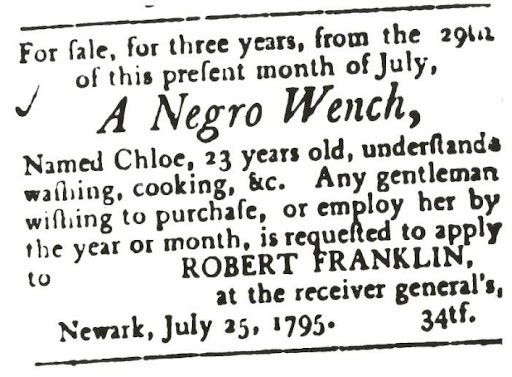
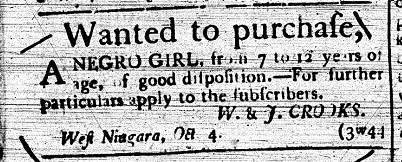
The men contracted as the King’s official printer published slave advertisements on behalf of the political, military, and social elite of southwestern Ontario in the pages of the Upper Canada Gazette during the eighteenth and nineteenth centuries, one of several provincial newspapers colonial Canada to do so. Newspaper printers who published slave ads also acted as middlemen or agents of slave transactions in instances where advertisements required interested customers to “inquire of the printer” in order to complete a sale, making the printing offices serve as a slave depot.Colonial newspapers contributed to the perpetuation of slavery.
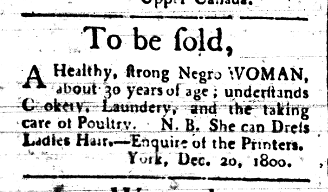
These newspaper advertisements show the commodification of the enslaved Black people who were put up for sale. The ads provide valuable information on the continued forced movement of those held in bondage through their sale. These records reveal some details such as their physical features, the monetary value placed on their lives, and details of their life of forced labour including the various skills and abilities they possessed.
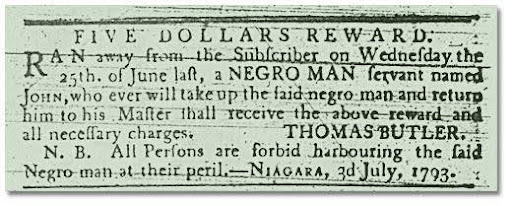
ENSLAVED BY WILLIAM AND HANNAH JARVIS
Paul Bishop’s House, 363-365 Adelaide Street East
William Jarvis, the provincial secretary and registrar of Upper Canada, lived in Jarvis House at the southeast corner of Sherbourne and Adelaide, at 363-365 Adelaide Street East with his wife, children and the six Black people he owned. When Jarvis received his government appointment in 1792, the Jarvises settled in Newark (today Niagara-on-the-Lake). They acquired slaves shortly after their arrival from England. Jarvis, his wife Hannah, their children, and the Black people they enslaved moved to the Town of York (Toronto) in 1798. William was one of several members of the large Jarvis clan that enslaved Black people in New Brunswick and Upper Canada. The Town of York censuses of 1799, 1800, and 1802 distinctly recorded that Jarvis enslaved six Black people of varying ages, three males and three females - Moses and his wife Phoebe, Sussex, Kitty, Prince (also known as Henry), and a female whose name is unknown.
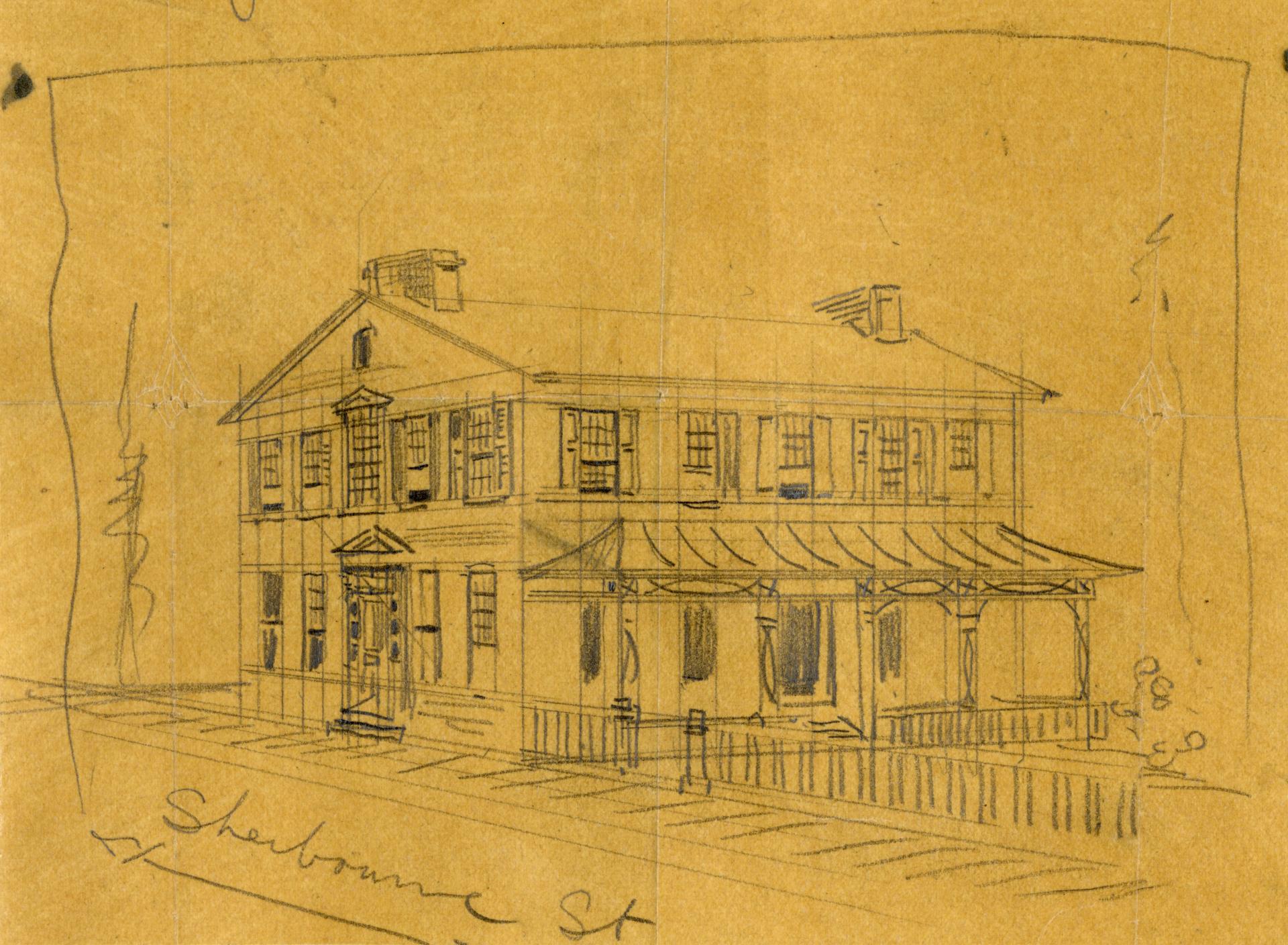
Jarvis House faced Sherbourne Street and sat on two acres spread over the entire Sherbourne and Adelaide area. It was built by a contracted builder with squared logs, 30 by 41 feet, two floors, and was covered with clapboarding. At the time of its construction, this house was probably the largest building in the town of York. There was a fence with a high-peaked gate opening from Duke street (now Adelaide Street), into the lot where were built two big barns and a stable to house the horses, cows, sheep and pigs he brought with him from Niagara, and a chicken coup. There were outhouses and a root house. There were many fruit trees, many of them pear trees, which were a favourite of settlers. On the property were slave quarters built to house the six Black people he held in bondage.
This detailed description of the Jarvis estate serve to help us understand the kind of labour that the enslaved labourers performed: cleaning and maintaining the large home, inside and out, cooking, farming and harvesting crops, tending to the farm animals, milking cows, churning butter, making preserves and candles, preparing for and serving the elite guests who attended the balls and parties the Jarvises frequently hosted, and tending to the many Jarvis children
.
ENSLAVED BY PETER AND ELIZABETH RUSSELL
Peter Russell and his sister Elizabeth Russell lived at the northwest corner of Princess and Front streets, where Abbey Lane is now. He owned a four slaves – Peggy, Jupiter, Amy, and Milly. Peggy’s husband and the father of her children was a free man named Pompadour. He worked for the Russells for wages. The Russell estate was called Russell Abbey. Russell, the provincial administrator of Upper Canada also owned a farm and country house, called Petersfield, a long plot of 100-acre land that ran north from Queen Street West (just west of the Sheraton Hotel) north to Bloor, between Beverley and Huron streets, located 2.5kms north west of Russell Abbey.
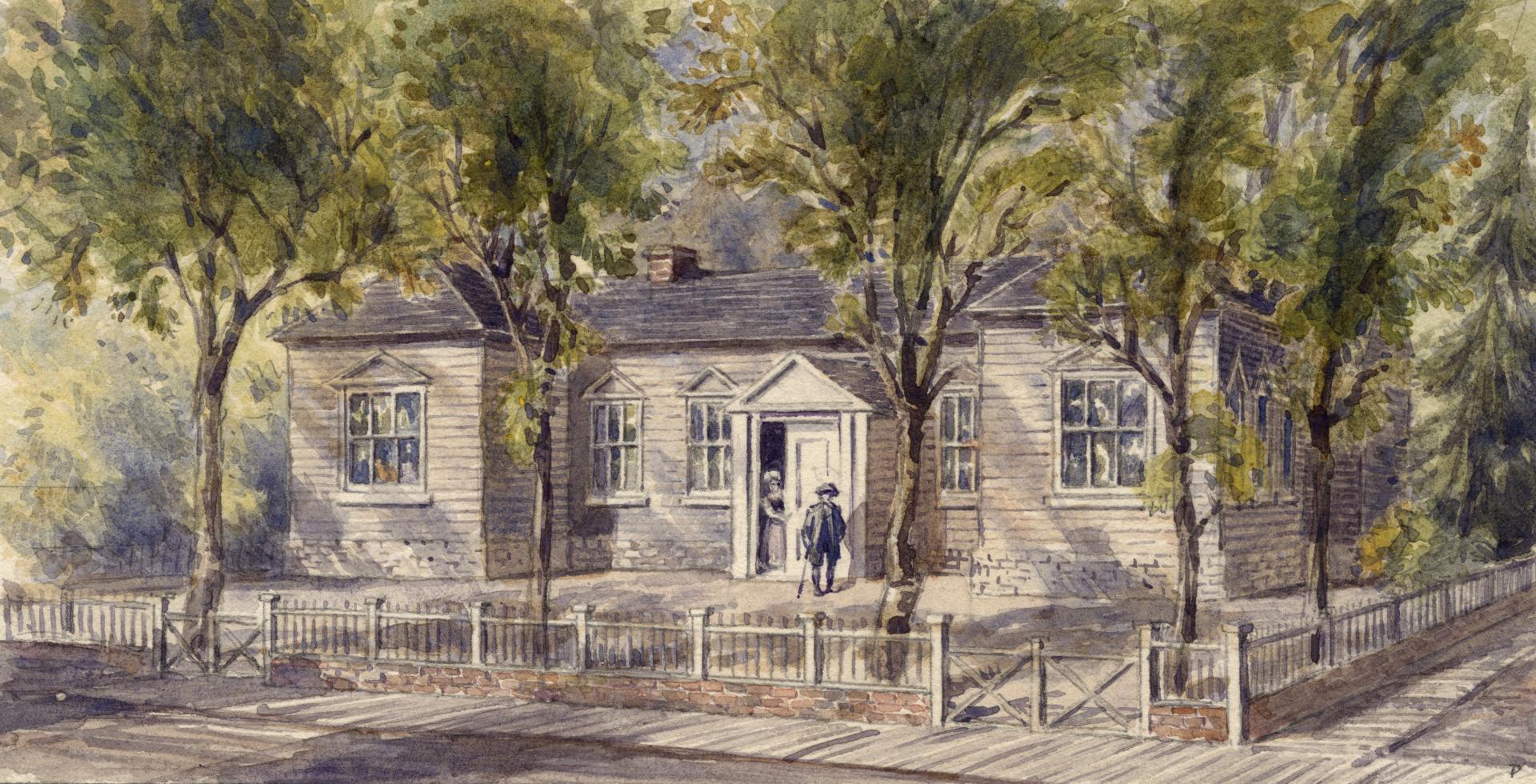
The family the Russell siblings enslaved carried out a range of tasks. We learn from an advertisement that Russell published in the Upper Canada Gazette in 1806 that Peggy cooked, washed laundry, and made soap and candles, likely with the assistance of her daughters. Jupiter worked as a house servant, but also did farming chores alongside his father at Petersfied.
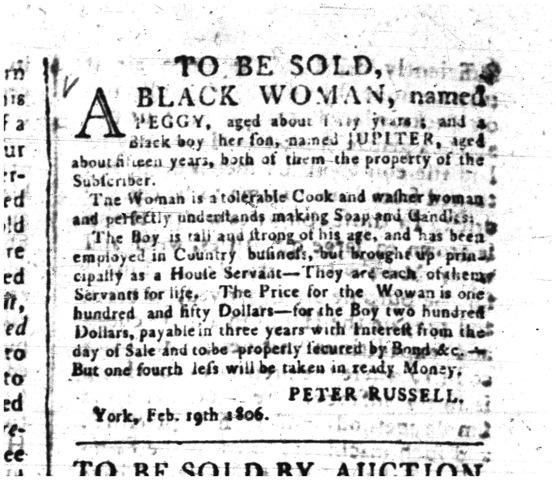
There were cows and oxen, sheep, and horses that they tended to. They hunted deer, threshed wheat, and harvested the crops grown at Petersfield including timothy seed/grass for hay, potatoes, wheat, oats, barley, melon seeds, cauliflower, cabbage, parsnips, carrots, beets, spinach, raspberries, and sweet briar. Pompadour assisted farm supervisor Joseph Willcocks to bring corn, barley, and wheat to the mill. A free Black man named Robert Franklin, was employed as a servant by Russell and worked alongside Pompadour and Jupiter. Willcocks noted in his September 30, 1800 diary entry that Pompadour also accompanied him to collect Russell’s order of goods, along with goods for William Jarvis and David W. Smith, on a ship in the harbour commanded by Captain Joseph Bouchette, commander of the naval force on Lake Ontario. Pompadour and “a man of Jarvis’s” (one of Jarvis’s slaves) rowed the boat to the vessel.
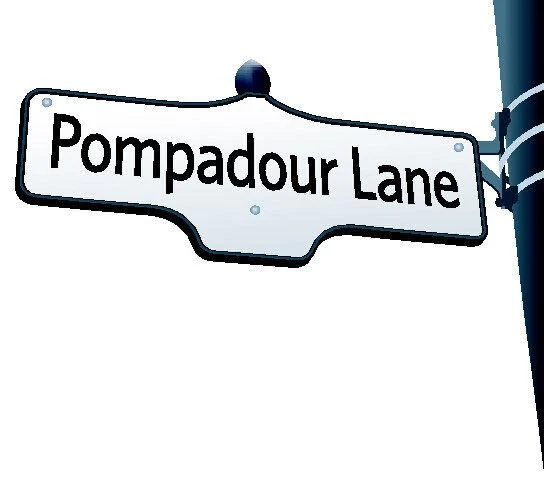
Numerous documents give us a sense of how the Russells treated the Black people they enslaved. In October 1799, Russell paid for three months of tuition for his Black boy [Jupiter] to private teacher William Cooper. Peter Russell gave Peggy a $4 monthly allowance in 1803 and 1804. On October 13, 1800, Jupiter was tied up in the storehouse for most of the day for mitching, or playing truant, from the farm the day before. In 1806, Russell placed an advertisement in the newspaper to put up Peggy and Jupiter for sale. It is said that Elizabeth Russell gifted Amy, a “tall, comely negress,” to her goddaughter Elizabeth Denison, daughter of Captain John Denison.
In 2013, a laneway was named after Pompadour. It runs south of Adelaide St. East, just west of Berkeley Street
SLAVERY AND THE LAW
The seat of the provincial government has legislative significance to the institution of racial chattel slavery. In 1793, Lieutenant Governor John Graves Simcoe temporarily relocated the capital of the province and the seat of the provincial government to the Town of York in 1793; this decision became permanent in 1796. The first official Parliament buildings were located at Parliament at Front streets at the northeast corner of the block and was ready for use in 1798 for the second parliament.
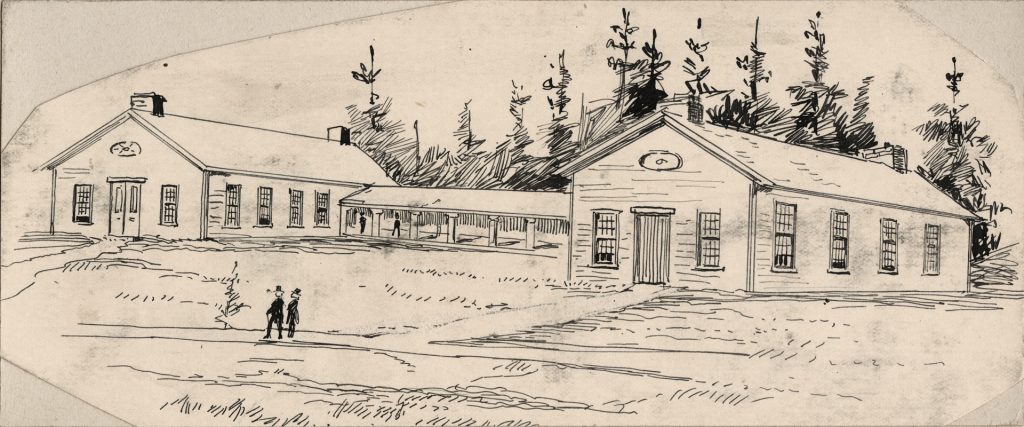
Five years before, the “Act to Prevent the further Introduction of Slaves and to limit the Term of Contracts for Servitude Statutes of Upper Canada,” or the 1793 Act to Limit Slavery, was introduced and passed during the first parliament of the legislative assembly of Upper Canada in Newark (Niagara-on-the-Lake). This piece of historic legislation was influenced by the Chloe Cooley incident in the Niagara area. The enslaved Black woman was taken, kicking and screaming by her enslaver Adam Vrooman, across the Niagara River to be sold in the United States.

The 1793 Act to Limit Slavery did not automatically free any enslaved persons. In fact, this law confirmed and reinforced the enslavement of those who were held in bondage prior to its passage. They could be enslaved for life. As a compromise among the members of the legislative assembly, more than half of whom enslaved Black people, the Act limited slavery by banning the further importation of slaves into Upper Canada and charted the path for gradual abolition for the children of those enslaved. The Act further specified that children born after 1793 could be enslaved until the age of 25 and their offspring would be freed at birth. These gradual, generational phases would reduce and eventually eliminate the number of Blacks in bondage over twenty-five years.
Simcoe and Attorney General John White’s attempts have slavery abolished were unsuccessful, because eight out of the sixteen elected members of the first Parliament of the Upper Canada Legislative Assembly (1792–96) were slave owners or had family members who owned slaves: John McDonell, Ephraim Jones, William Macomb, Hazelton Spencer, David William Smith, Joshua Booth, François Baby and Peter Van Alstine. Additionally, six out of the nine original appointed members of the upper house of the Legislative Council of Upper Canada were also slave owners and/or members of slaveholding families: Peter Russell, James Baby, Alexander Grant Sr., Richard Duncan, Richard Cartwright and Robert Hamilton.
The issue of slavery was a contentious one. Hannah Jarvis incorrectly remarked in a letter to her father shortly after the passage of the 1793 Act to Limit Slavery that Simcoe “has by a piece of chicanery freed all the negroes, by which move he has rendered himself unpopular with those of his suite, particularly the Attorney General, Member for Kingston, who will never come in again as a representative." The government newspaper, the Upper Canada Gazette, printed the 1793 Act to Limit Slavery from July 11, 1793 to December 26, 1801 to inform the public of the new law.
When the 2nd Parliament (1797-1800) sat in the Town of York, the issue of slavery was raised again. Some enslavers in the province were unhappy with the limitations on and conditions of slave ownership. Fourteen out of the seventeen sitting members of the 2nd Parliament either enslaved Black people or were from slaveholding families: David W. Smith, who was serving his second term, Thomas Fraser, who enslaved four Black individuals in the District of Johnstown, was the district’s first sheriff and came from a Loyalist slaveholding family. Richard Beasley enslaved several Black people in Hamilton, and Richard Norton Wilkinson was in possession of a Black woman and two Black children. Thomas McKee came from a slave-owning family and enslaved eight Black people himself. Dr. Solomon Jones purchased an eight-year-old Black girl from his brother Daniel in 1788, who traded in slaves, and Timothy Thompson owned a number of enslaved Black people in the Midland District (see Midland). Solicitor General Robert Isaac Dey Gray, discussed earlier owned a mother and her two sons. Benjamin Hardison owned Chloe Cooley before selling her to Adam Vrooman. Samuel Street and his business partner Andrew Butler (son of Colonel John Butler of Butler’s Rangers) dealt in the sale of many goods, including enslaved people. In 1786, they sold “a Negro wench named Sarah about nine Years old” to Adam Crysler for £40. William Fairfield and Edward Jessup Jr. were also from families that enslaved Black people. And lastly, Christopher Robinson was from a family that enslaved Black people.
In 1798 legislator Christopher Robinson brought forth a proposed bill to the Lower House to reverse the law that Simcoe and White introduced in 1793 to allow white settlers to once again import slaves and permit incoming white settlers to import their slave property to help meet labour shortages. The Bill to authorize and allow persons coming into this Province to settle to bring with them their Negro Slaves passed the first three readings in the Assembly.
The legislative members that voted to reverse the 1793 Act to Limit Slavery and to reinstate the importation of enslaved Blacks were: John McDonell, Richard Beasley, Benjamin Hardison, Christopher Robinson, Thomas Fraser, Edward Jessup Jr., Samuel Street, and Solomon Jones.
The legislative members who voted against the bill were: Robert Isaac Dey Gray, David McGregor Rogers, Richard Norton Wilkinson, and John Cornwall.
Robinson’s bill passed 8 to 4 and it was forwarded to the Legislative Council. The Legislative Council tied up the bill until the close of the parliamentary session, called a three months' hoist, and in doing so prevented it from becoming law. The motion for the three months' hoist in the Upper House was made by the Honorable Richard Cartwright seconded by the Honorable Robert Hamilton.
The introduction of this piece of legislation reflected the political and economic interests in maintaining the institution of slavery and an opposition to the abolition in the province.
EDUCATION AND SLAVERY
120 Front St E, Toronto, ON M5A 1E3
Englishman William Cooper was one of the early settlers in the Town of York. He kept a tavern, opened a coffee house, established a wharf in the Church and Front streets area, and opened a primary school in his home on George Street. One of his pupils for a period of time was Jupiter, the young boy enslaved by Peter Russell. In October 1799, Russell paid Cooper three months of tuition for the Black boy in his household. This is interesting because the majority of enslavers in the Atlantic world did not pay to educate the Black children they held as chattel because they were treated merely as labourers. Prevailing racist views of Black intellectual inferiority also informed what many white settlers thought about Black education. This highlights the complexities of perspectives held by enslavers that impacted the lives of the people they enslaved – Russell paid for Jupiter’s instruction, committed Jupiter to jail in 1805, and in 1806 placed him for sale.
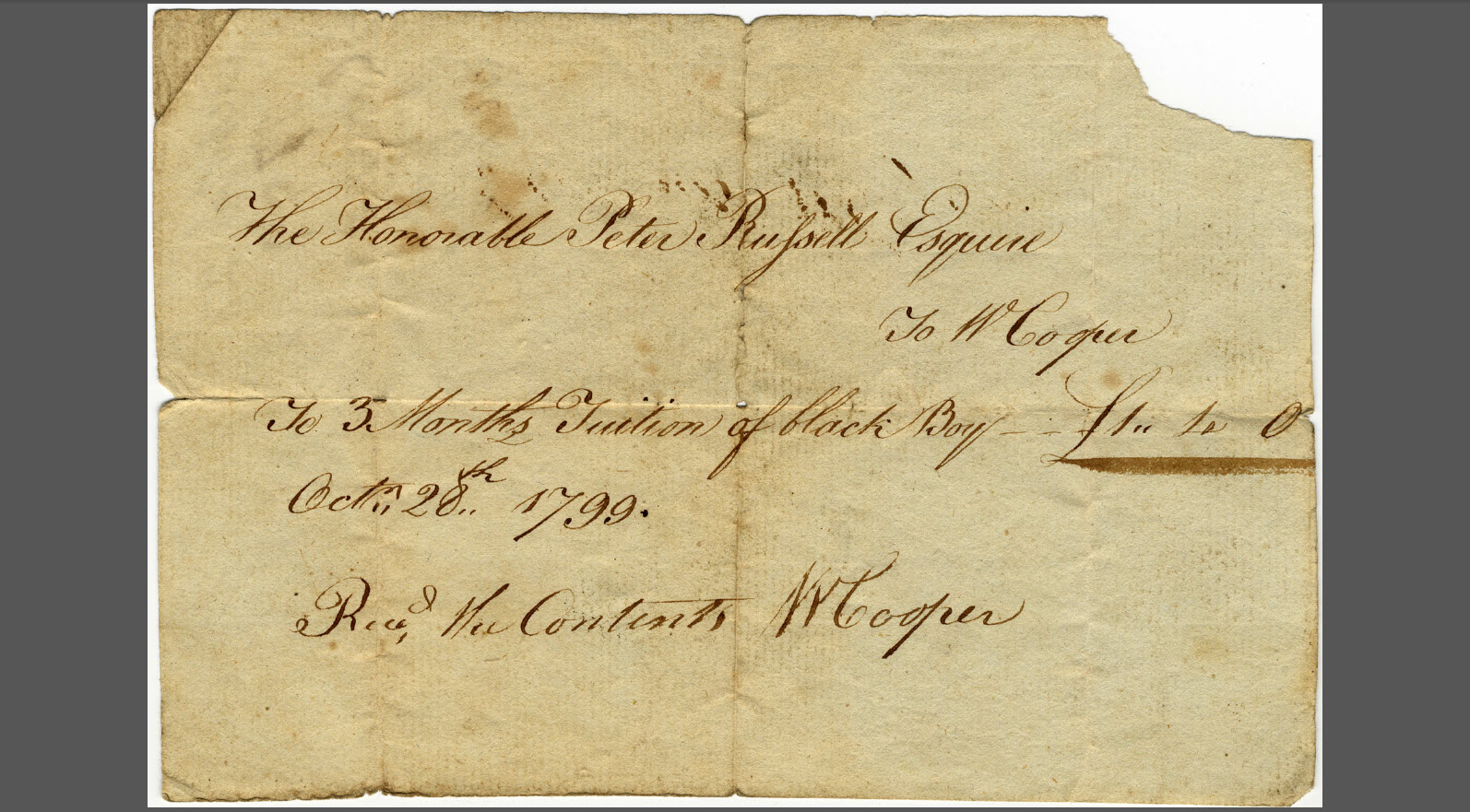
ENSLAVED LABOUR ALONG LAKE ONTARIO
69 Front St E, Toronto, ON M5E 1B5
At the turn of the nineteenth century, the shoreline of Lake Ontario was at Front Street. There was a wharf in this vicinity where merchant goods were transported and products sold at the nearby public market. The Black people enslaved in the Town of York ran errands for their enslavers to collect packages and purchase items. In September 1800, Pompadour and one of the men Jarvis enslaved accompanied Peter Russell’s farm manager Joseph Willcocks to the lakefront to retrieve parcels for Russell and Jarvis from Commander Jean-Baptiste Bouchette’s vessel. Both Black men rowed a small boat to the ship, transporting Willcocks and the packages.
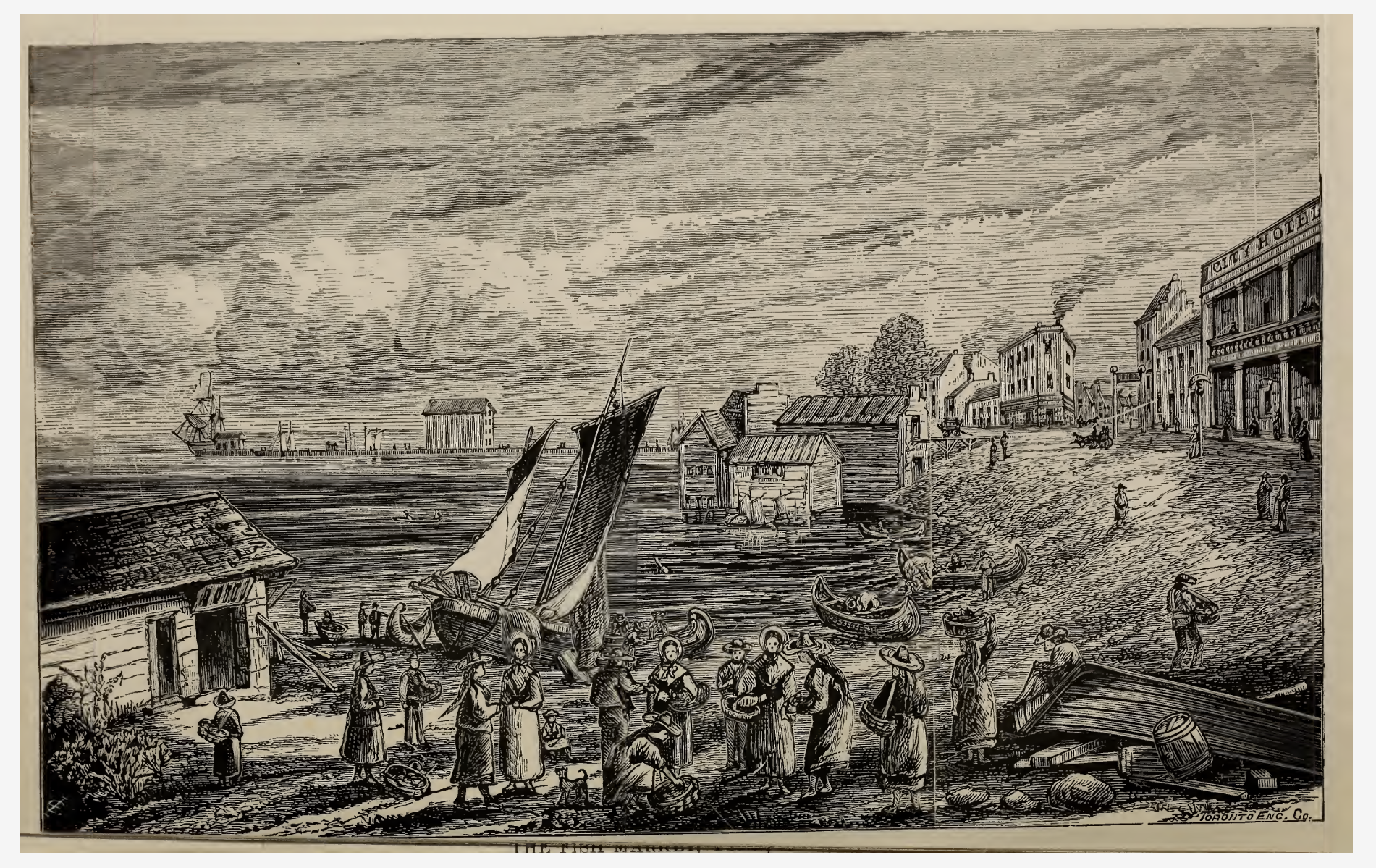
ENSLAVED BY JAMES AND ROBERT GRAY
HSBC Building, 120 Wellington St. W.
Robert Isaac Dey Gray, the solicitor general of Upper Canada, lived in a large white house at the northwest corner of Wellington (then Market Street) and York streets when he relocated from Cornwall, Ontario after receiving his appointment in 1800. The street address of his residence was later numbered 118 Wellington Street West. Gray was also one of the original organizers of the Law Society of Upper Canada. He brought the two young men from the family he inherited from his father Major James Gray, brothers Simon and John. Their mother Dorinda and sisters remained in Cornwall.
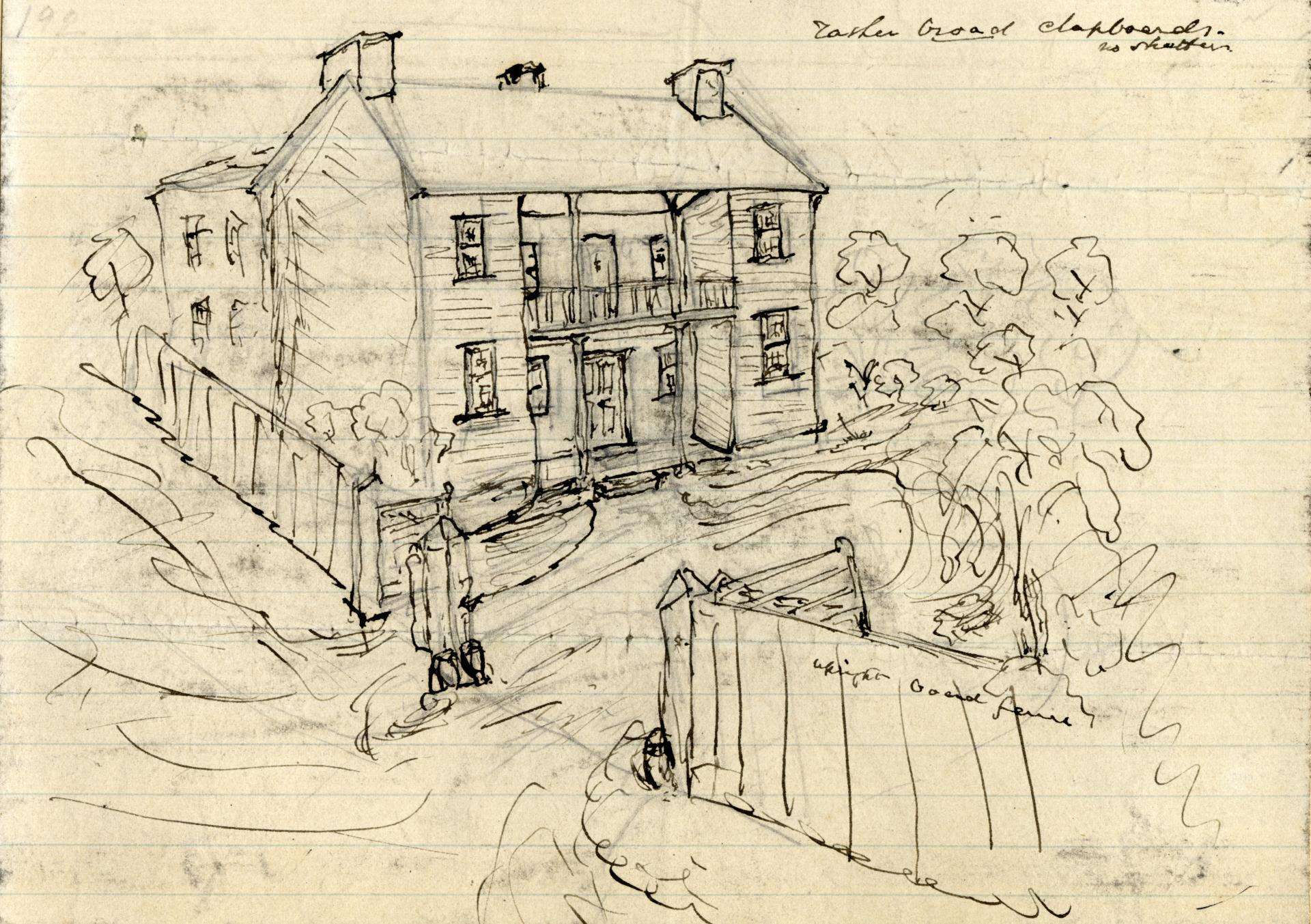
Simon waited on the Solicitor General, doing anything that was required of him. He performed many chores for his master, including looking after his master's horse, making sure it was well groomed and well fed. As his master’s personal attendant Simon would have also accompanied him on work trips, carrying his brief bag and other baggage and assisting in any other way he was needed in his roles as a lawyer and legislator. Simon also served as a butler, welcoming and escorting visiting guests inside the home. Simon was enumerated in the 1802 Town of York census and an unnamed male, presumed to be John, was counted with Robert Gray. John had joined Gray and his brother from Cornwall by 1801 and would have laboured in a similar capacity. In an interview in 1868, John recollected that Solicitor Gray dressed his brother Simon very well, “He dressed up Simon better than himself. He took him to Toronto with him…Simon was master's body servant, and dressed finer than his master, with a beaver hat and gold chain.”
Solicitor Gray and his manservant Simon were two of the twenty passengers who died on the HMS Speedy on 7 October 1804 in a storm on Lake Ontario while on the way to conduct a trial in Cobourg. In his will written a year before, Gray freed his slaves upon his death. John was now a free man. After the death of his brother and enslaver, John remained in York and went to live with Chief Justice William Dummer Powell, one of Upper Canada’s first lawyers and fifth Chief Justice the province, for approximately six months. The Powell residence at this time was near the northeast corner of York and Front, now the site of the Royal York Hotel. It was a small log house covered with painted clapboard.
He enlisted in the New Brunswick Fencibles (renamed the 104th Regiment of Foot of the British Army in 1810) during the winter of 1804/1805 and left to train in New Brunswick. John served in the War of 1812. His regiment was ordered to Upper Canada to support the British defence against the Americans. The 104th took part in the raid on Sackets Harbor in New York. They also fought in the Battle of Chippawa, the Battle of Lundy’s Lane, and the siege of Fort Erie. John was wounded in battle but recovered. When his military service ended, John Baker as he was now known, returned to live in Cornwall with his mother and other siblings. He got married and worked as a general labourer. John did not receive his war service pension until 1861, one shilling sterling per day until the day he died on January 17, 1871. John Baker was also noted at his death as having been the last surviving Canadian-born enslaved person of African descent in both Lower and Upper Canada (Quebec and Ontario).
ENSLAVED AND INCARCERATED
King Edward Hotel, 37 King Street East,
Leader Lane side at King Street West
The Black women, men, and young people who involuntarily arrived in early Toronto were at times doubly bounded when they were criminally charged and imprisoned. There are a few instances of enslaved Black people being committed to the local jail, a log hut at King and Toronto streets, where the King Edward Hotel stands today.
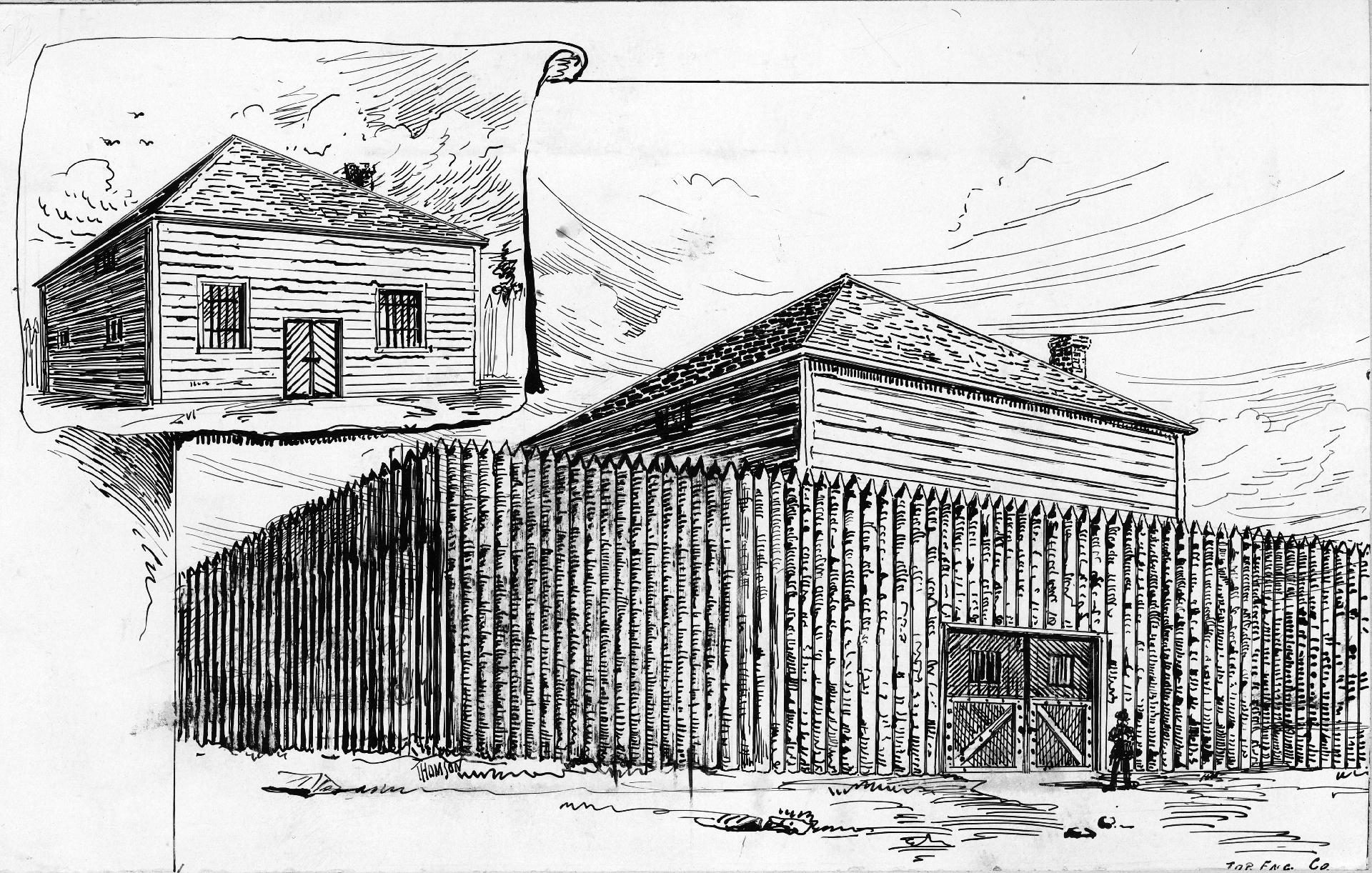
Incarcerating enslaved Black people was a common practice in places where the institution of slavery existed, and Toronto was not an exception. Enslavers used imprisonment to punish and control the people they enslaved often in response to them being uncooperative and difficult towards their enslavers or running away. These acts of “non-compliance” and “defiance” were often forms of resistance against their forced condition.
A female slave named Kitty enslaved by William and Hannah Jarvis was committed to jail in January 1801. Jarvis charged Kitty with assaulting him. She pled guilty to the five justices of the peace, one of whom was her own enslaver, and she was ordered to be held in jail until her sentencing. Jarvis withdrew the charges two days later, and ordered her to return to her duties in his home instead of receiving a whipping as punishment. However, Kitty declared her innocence and refused to return to Jarvis, even though she knew she would be imprisoned again in the dead of winter and her sentence would be carried out. The rudimentary building was small, dark, and damp, surrounded by a high spiked cedar fence with iron doors. Kitty preferred prison over the residence of Jarvises.
Peggy, the Black woman owned by Peter and Elizabeth Russell was jailed several times, including one occasion during the fall of 1801 as noted in a letter Peter wrote to Captain Matthew Elliott in Amherstburg:
My Slave Peggy, whom you were so good to promise to assist me in getting rid of, has remained in Prison ever since you left (in expectation of your sending for her) for an Expense of above Ten pounds Halifax, which I was obliged to pay to the Gaoler –and release her last Week by order of the Chief Justice. She is now at large, being not permitted by my Sister to enter this House, and shows a disposition at Times to be very troublesome, which may perhaps compel me to commit her again to Prison.
In a diary entry dated January 25, 1806, Elizabeth Russell complained that Jupiter, the young boy that she and her brother enslaved was “troublesome,” a “thief and everything that was bad,” and described how he repeatedly defied the orders of his master and mistress. Jupiter was also jailed a few times as punishment for various offences and later released, once on charges of threatening members of the well-known Denison family, who were tenants on Russell land.
In the second case, in 1811, two other Black persons that Jarvis enslaved were charged for committing a crime. A young male named Henry (also known as Prince) and an unnamed young female were accused of stealing gold and silver from their Jarvis’s desk and running away the night before to elope. Both were caught. The young female was ordered to return to the service of her enslaver, but Prince was ordered held in custody until his court date.
Peter Russell and William Jarvis used the criminal justice system and its agents, such as police constables and the jailers, as extensions of their control over the individuals they enslaved and to maintain the brutal oppression inflicted upon them. Their use of the courts and the jail was an overreach of their power and status; in 1799 Russell commissioned the building of the first jail in which the Black people he enslaved were confined and Jarvis was an officer of the court.
Conclusion
157 King St E, Toronto, ON M5C 1G8, Canada
The Black men, women, and children enslaved in early Toronto were some of the approximately 4,500 Black people held as “servants for life” in the French and British colonies that became Canada, of which at least 625 were held in bondage in Upper Canada. Enslaved Black people were forced to migrate, brought through coercion, and were violently displaced. They did not choose to live in early Toronto, Upper Canada, or early Canada under indefinite captivity or to have their labour exploited.
Fast forward to 1851, 17 years after slavery was abolished throughout the British colonies, including Canada. In September of that year, the North American Convention for Coloured People was held at the St. Lawrence Hall. The delegates from towns across southwestern Ontario, the United States, Jamaica, and England chose Canada as the best place for African American freedom seekers. “Resolved, that the convention recommend to the colored people of the U.S. of America, to emigrate to the Canadas instead of going to Africa or the West India Islands, that they, by so doing, may be better able to assist their brethren who are daily dying from American slavery.” It is estimated that 50,000 freedom seekers exercised their choice, given the circumstances, to migrate to Canada and make it their temporary or permanent home.
